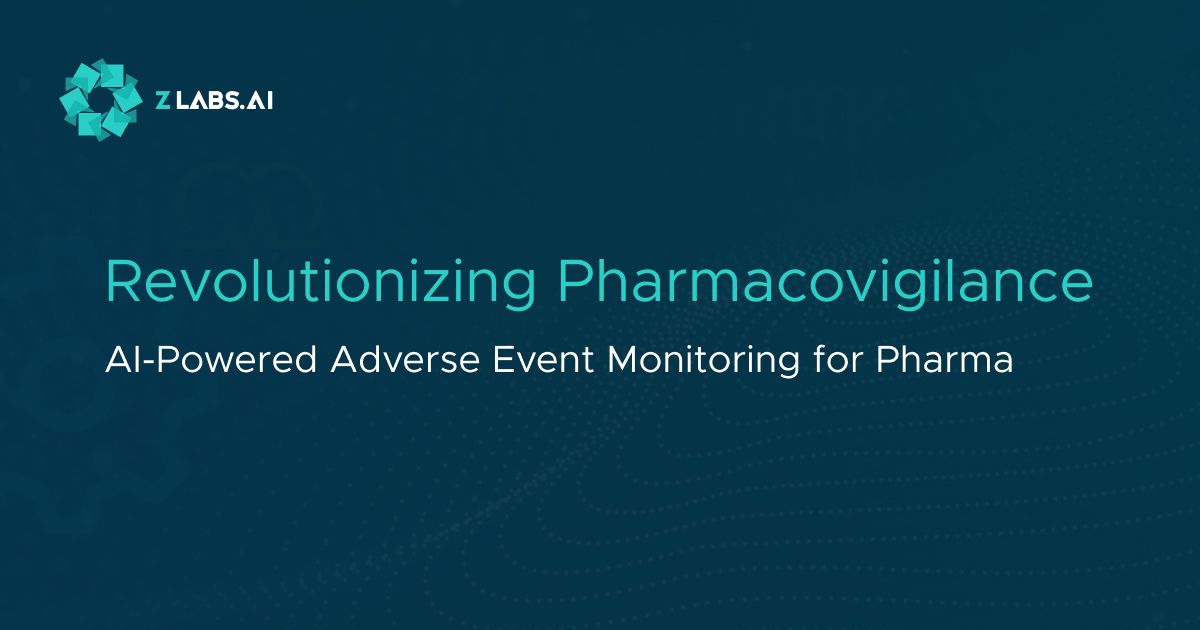Future of Drug Safety: AI-Powered Pharmacovigilance | ZLabs
Adverse drug reactions (ADRs) and adverse events (AEs) are critical concerns for pharmaceutical companies, especially during the post-market phase of a drug's lifecycle. Ensuring the safety of patients while maintaining regulatory compliance requires meticulous monitoring and reporting of these events. However, the challenge lies in the nature of AE data, which is often reported in an unstructured manner through various channels like emails, phone calls, social media, and medical articles. This makes the process of capturing and analyzing AE data cumbersome and prone to errors.

The Challenge of Adverse Event Monitoring
Post-market surveillance is a vital process for pharmaceutical companies to detect and respond to adverse events associated with their products. The diversity of data sources and the unstructured format of AE reports can overwhelm traditional monitoring systems. Manual processing of such data is not only time-consuming but also increases the risk of missing critical information.

Introducing Our AI Accelerator
To address these challenges, we have developed a cutting-edge AI accelerator specifically designed to streamline the monitoring and reporting of adverse events. Our solution integrates seamlessly with both cloud and on-premises systems, providing unparalleled flexibility and ease of use.
Key Features and Benefits
- Seamless Integration: Our AI accelerator can be easily integrated into existing infrastructure, whether it’s cloud-based or on-premises. This ensures a smooth transition and immediate enhancements in AE monitoring capabilities.
- Advanced Monitoring and Alert Configuration: The AI-driven monitoring system allows for custom configurations, enabling pharmaceutical companies to prioritize and flag certain adverse events based on their significance. This ensures that critical AEs trigger immediate alerts, allowing for prompt action.
- Efficient Data Extraction and Deduplication: The accelerator excels at extracting adverse event data from various unstructured sources. It also employs sophisticated algorithms to remove duplicate entries, ensuring that the data remains clean and manageable.
- Auto Classification and Grouping: By highlighting key medical terms, our AI system automatically classifies and groups similar adverse events. This not only simplifies the analysis process but also enhances the accuracy of the data being reviewed.
- Source Referencing for Quick Validation: For each extracted adverse event, the system provides detailed source references. This feature is particularly beneficial for pharmacovigilance (PV) teams, as it facilitates quick and efficient validation of the data.
- Visualization Widgets and Dashboards: To aid in the interpretation and analysis of AE data, the accelerator includes powerful visualization tools. Customizable widgets and dashboards provide clear and insightful representations of the data, making it easier for stakeholders to understand trends and make informed decisions.

Conclusion
The landscape of pharmacovigilance is evolving, and the need for efficient, accurate, and comprehensive adverse event monitoring has never been greater. Our AI accelerator is designed to meet these needs, offering a robust solution that enhances the safety and efficacy of pharmaceutical products. By leveraging advanced AI technologies, we empower pharma companies to stay ahead in their post-market surveillance efforts, ensuring patient safety and regulatory compliance.